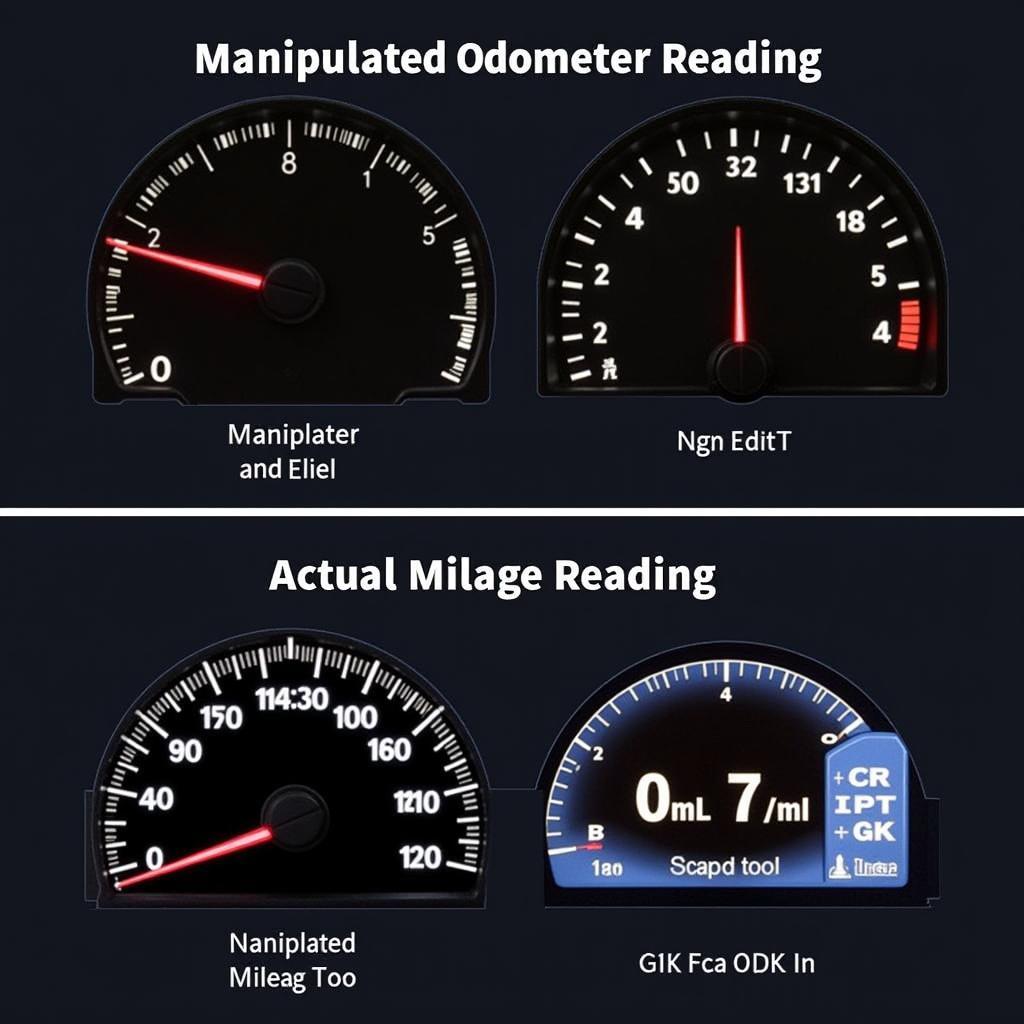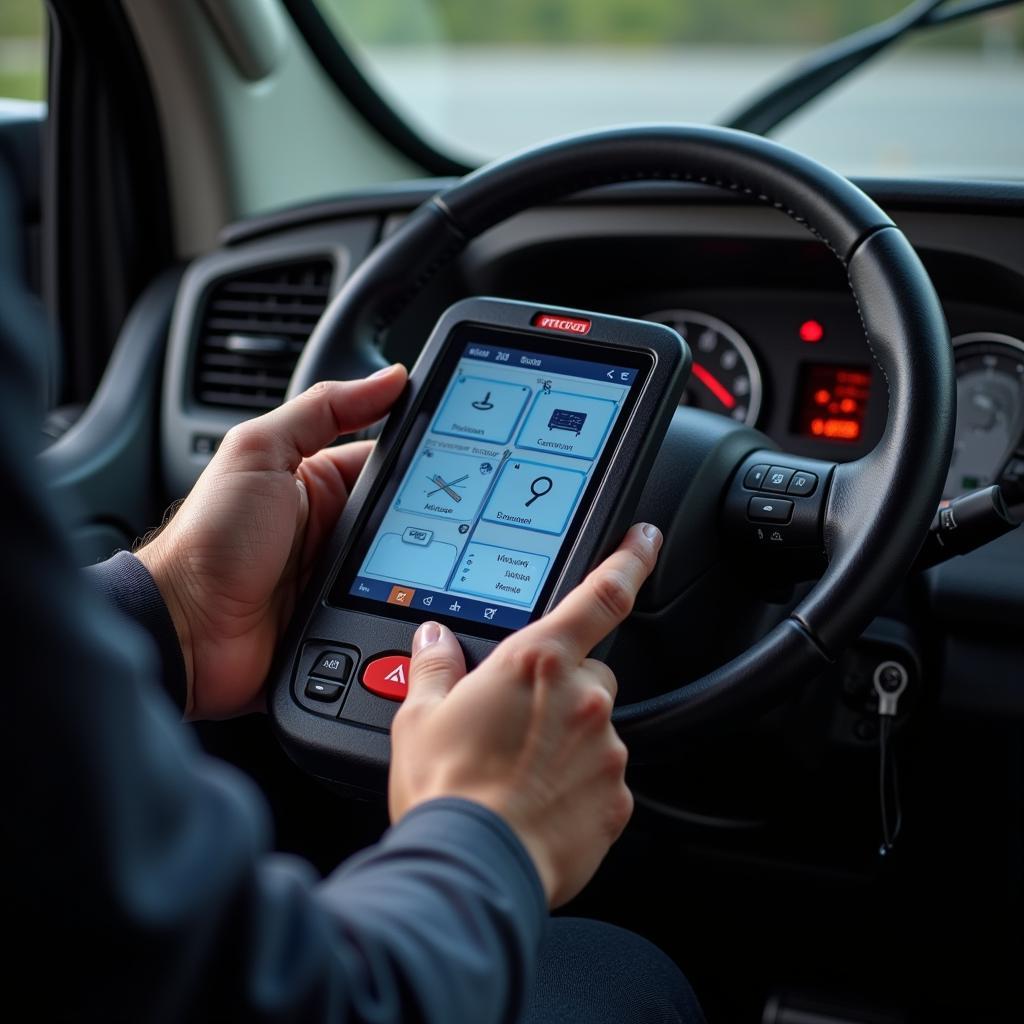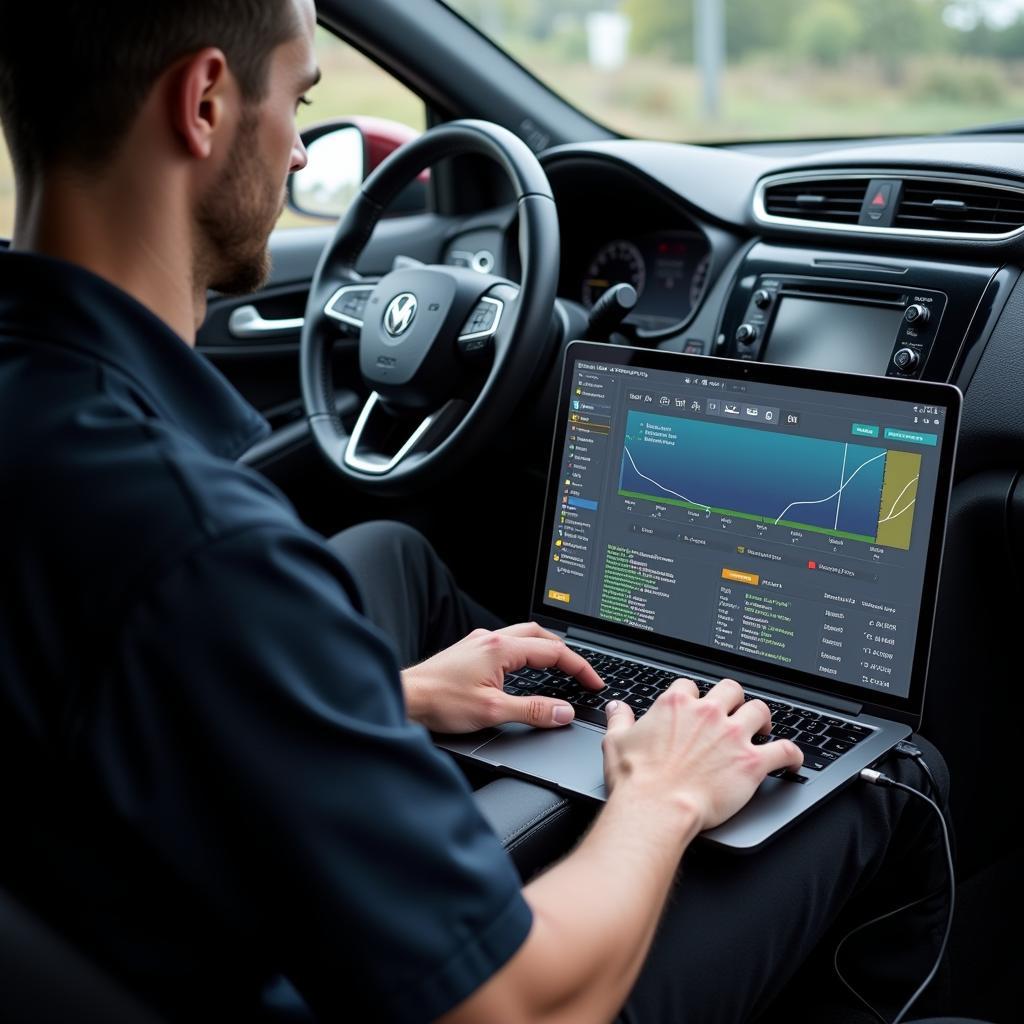Finding a Scan Tool That Can Read Actual Miles is crucial for accurate vehicle diagnostics and preventing odometer fraud. Whether you’re a car owner, mechanic, or technician, understanding how to access and interpret this data is essential. This guide will delve into the intricacies of mileage reading, the types of scan tools available, and how to use them effectively.
After the introduction, you might be interested in learning about using a scan tool for other diagnostics, such as checking map sensor with scan tool. Accurate mileage information is not only crucial for assessing a vehicle’s history but also for determining appropriate maintenance schedules and identifying potential discrepancies. Ignoring this vital piece of data can lead to costly repairs and compromise the overall reliability of a vehicle.
Types of Scan Tools for Reading Actual Mileage
There are various types of scan tools on the market, each offering different levels of functionality and complexity. Choosing the right one depends on your specific needs and budget.
Basic OBD2 Scanners
Basic OBD2 scanners are affordable and widely available. They can read and clear basic diagnostic trouble codes (DTCs) and access some live data parameters. However, they may not always provide access to the actual mileage stored in the vehicle’s modules. For more complex diagnostics, check this guide on how to diagnose a catalytic converter misfire using a car code scanner misfire catalytic converter.
Enhanced OBD2 Scanners
Enhanced OBD2 scanners offer more advanced features than basic models. They often include access to ABS, SRS, and transmission data, and some can read the actual mileage from various modules.
Professional Scan Tools
Professional scan tools are the most comprehensive and expensive option. They provide access to all vehicle systems, including the ability to read actual mileage, perform bidirectional controls, and access manufacturer-specific data. For real-time diagnostics, using the best obd2 scan tool with live data is invaluable. It gives you instant insights into the performance of your vehicle.
How to Read Actual Mileage with a Scan Tool
The process of reading actual mileage varies depending on the scan tool and the vehicle’s make and model. However, the general steps are as follows:
- Connect the scan tool to the vehicle’s OBD2 port.
- Turn the ignition on, but do not start the engine.
- Select the appropriate vehicle make and model in the scan tool’s software.
- Navigate to the “Mileage” or “Odometer” section. This may be located under different menus depending on the scan tool.
- The scan tool will then display the actual mileage stored in the vehicle’s modules.
Why is Reading Actual Mileage Important?
Knowing the true mileage of a vehicle is vital for a number of reasons:
- Detecting Odometer Fraud: Odometer rollback is a deceptive practice that can significantly affect a vehicle’s value and safety. A scan tool can help identify discrepancies between the displayed mileage and the actual mileage stored in the vehicle’s computer.
- Accurate Vehicle History: Actual mileage provides a more accurate picture of a vehicle’s usage and wear and tear, enabling informed purchasing decisions.
- Preventative Maintenance: Knowing the true mileage is crucial for scheduling preventative maintenance, such as oil changes, timing belt replacements, and other services based on actual usage.
Expert Insights on Mileage Reading
“Accurate mileage reading is essential for any serious automotive professional. It’s the cornerstone of honest vehicle assessment,” says John Davis, a seasoned automotive engineer with over 20 years of experience. “A reliable scan tool that can access the true mileage is an invaluable tool in the fight against odometer fraud.”
 Detecting Odometer Fraud with Scan Tool
Detecting Odometer Fraud with Scan Tool
“Don’t rely solely on the odometer,” advises Sarah Miller, a certified automotive technician and instructor. “A scan tool that can read actual miles is a must-have for verifying a vehicle’s history and ensuring proper maintenance.”
Conclusion
Investing in a scan tool that can read actual miles is a wise decision for any car owner, mechanic, or technician. It empowers you to make informed decisions about vehicle purchases, maintenance, and repairs. By understanding how to use these tools effectively, you can protect yourself from odometer fraud and ensure the long-term reliability and safety of your vehicle. For further assistance or inquiries, connect with ScanToolUS at +1 (641) 206-8880 or visit our office at 1615 S Laramie Ave, Cicero, IL 60804, USA.
FAQ
- Can all scan tools read actual miles? No, not all scan tools can read actual miles. Basic OBD2 scanners may not have this capability.
- Where is the actual mileage stored in a vehicle? Actual mileage is typically stored in multiple modules within the vehicle’s computer system, including the engine control module (ECM), powertrain control module (PCM), and sometimes the instrument cluster.
- How much does a scan tool that can read actual miles cost? The cost varies depending on the features and capabilities of the scan tool, ranging from a few hundred dollars for enhanced OBD2 scanners to thousands of dollars for professional-grade tools.
- Is it legal to roll back an odometer? Odometer rollback is illegal in most countries and can result in severe penalties.
- Can a scan tool detect if an odometer has been rolled back? While a scan tool can help identify discrepancies between the displayed mileage and the actual mileage stored in the modules, it is not always foolproof. A professional inspection may be necessary to confirm odometer fraud.
- What should I do if I suspect odometer fraud? If you suspect odometer fraud, report it to the appropriate authorities, such as your local consumer protection agency or the National Highway Traffic Safety Administration (NHTSA).
- How can I learn more about using a scan tool? There are numerous online resources and training courses available that can teach you how to use a scan tool effectively.


